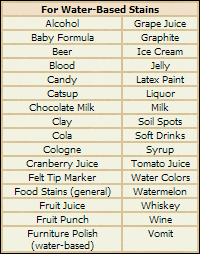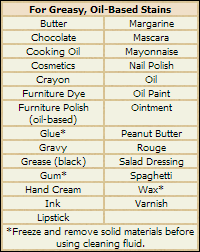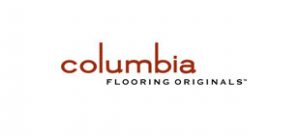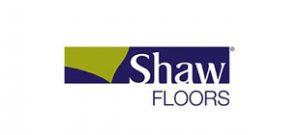Floor Care: Carpet Cleaning, Tile Cleaning, Hardwood Floor Care
Emergency Vinyl Care

Crayon
- Rub the stain with mineral spirits* or turpentine* on a clean white cloth. (*May be combustible/flammable please follow instructions on label.)
- Scrub the area with a Floor Stripper and a nonabrasive white scrubbing pad, following instructions on the label.
Lipstick
- Rub the stain with rubbing alcohol (isopropyl alcohol)* on a clean white cloth. (*May be combustible/flammable please follow instructions on label.)
- If stain is still visible, rub the stain with mineral spirits* or turpentine* on a clean white cloth. (*May be combustible/flammable please follow instructions on label.)
- Scrub the area with Armstrong New Beginning® Extra-Strength Floor Stripper and a nonabrasive white scrubbing pad, following instructions on the label.
Grape Juice/Wine
- Scrub the area with Armstrong New Beginning® Extra-Strength Floor Stripper and a nonabrasive white scrubbing pad, following instructions on the label.
Mercurochrome/Merthiolate
- Scrub the area with Armstrong New Beginning® Extra-Strength Floor Stripper and a nonabrasive white scrubbing pad, following instructions on the label.
Mustard**
- ** These stains may not be entirely removable from vinyl no-wax floors.
- Scrub the area with Armstrong New Beginning® Extra-Strength Floor Stripper and a nonabrasive white scrubbing pad, following instructions on the label.
Pen Ink**
- ** These stains may not be entirely removable from vinyl no-wax floors.
- Rub the stain with rubbing alcohol (isopropyl alcohol)* on a clean white cloth. (*May be combustible/flammable please follow instructions on label.)
- If stain is still visible, rub the stain with mineral spirits* or turpentine* on a clean white cloth. (*May be combustible/flammable please follow instructions on label.)
- Scrub the area with Armstrong New Beginning® Extra-Strength Floor Stripper and a non-abrasive white scrubbing pad, following instructions on the label.
Permanent Marker**
- ** These stains may not be entirely removable from vinyl no-wax floors.
- Rub the stain with mineral spirits* or turpentine* on a clean white cloth. (*May be combustible/flammable please follow instructions on label.)
- If stain still shows, very carefully wipe with fingernail polish remover containing acetone (follow use instructions on label) on a clean white cloth.
- If stain still shows, rub the area with rubbing alcohol (isopropyl alcohol)* on a clean white cloth. (*May be combustible/flammable please follow instructions on label.)
- Scrub the area with Armstrong New Beginning® Extra-Strength Floor Stripper and a nonabrasive white scrubbing pad, following instructions on the label.
Asphalt Driveway Sealer/Shoe Polish**
- ** These stains may not be entirely removable from vinyl no-wax floors.
- Rub the stain with mineral spirits* or turpentine* on a clean white cloth. (*May be combustible/flammable please follow instructions on label.)
- If stain still shows, rub the area with rubbing alcohol (isopropyl alcohol)* on a clean white cloth. (*May be combustible/flammable please follow instructions on label.)
- Scrub the area with Armstrong New Beginning® Extra-Strength Floor Stripper and a nonabrasive white scrubbing pad, following instructions on the label.
Hair Dye
- Rub the stain with rubbing alcohol (isopropyl alcohol)* on a clean white cloth. (*May be combustible/flammable please follow instructions on label.)
- If stain still shows, use mineral spirits* or turpentine* on a clean white cloth. (*May be combustible/flammable please follow instructions on label.)
- If stain still shows, very carefully wipe with fingernail polish remover containing acetone (follow use instructions on label) on a clean white cloth.
- Scrub the area with Armstrong New Beginning® Extra-Strength Floor Stripper and a non-abrasive white scrubbing pad, following instructions on the label.
Paint/Varnish
- If paint stain is wet, wipe up the stain with water on a clean white cloth.
- If paint stain is dry, carefully scrape residue with a thin spatula.
- If stain still shows, rub the area with rubbing alcohol (isopropyl alcohol)* on a clean white cloth. (*May be combustible/flammable please follow instructions on label.)
- If stain still shows, use mineral spirits* or turpentine* on a clean white cloth. (*May be combustible/flammable please follow instructions on label.)
- If stain still shows, very carefully wipe with fingernail polish remover containing acetone (follow use instructions on label) on a clean white cloth.
- Scrub the area with Armstrong New Beginning® Extra-Strength Floor Stripper and a nonabrasive white scrubbing pad, following instructions on the label.
Nail Polish
- Very carefully wipe with fingernail polish remover containing acetone (follow use instructions on label) on a clean white cloth.
Rust
- Apply Armstrong New Beginning® Extra-Strength Floor Stripper to the stain and let it stand for five minutes. Scrub vigorously with a stiff-bristle brush or nonabrasive white scrubbing pad, wipe, rinse, and let dry.
- If traces remain, rub with a soft cloth dipped in a solution of oxalic acid and water (1 part acid to 10 parts water).
- NOTE: Please follow instructions and cautions on label, as oxalic acid is poisonous.
Cigarette Burns
- The procedure depends on the exact construction of your floor. Consult your retailer.
Black Heel Marks
- Scrub the area with Armstrong New Beginning® Extra-Strength Floor Stripper and a nonabrasive white scrubbing pad, following instructions on the label.
- If stain still shows, rub the area with a non abrasive cleaner.
- If stain still shows, rub the area with rubbing alcohol (isopropyl alcohol)* on a clean white cloth. (*May be combustible/flammable; please follow instructions on label)
Emergency Hardwood Care

Spots caused by food, water or animals
- Apply Armstrong Hardwood & Laminate Floor Cleaner to a clean soft cloth.
- Rub the area to remove the stain or spot.
- More stubborn spots may require additional cleaning with a stronger product like ‘Armstrong Wipe Clean’, followed by cleaning with a Hardwood & Laminate Floor Cleaner.
Grease/Lipstick/Crayon/Ink Spots/Rubber Heel Marks
- Apply a Hardwood & Laminate Floor Cleaner to a clean soft cloth.
- Rub the area to remove the stain or spot.
- If stain remains, rub with a cloth dampened with Armstrong Wipe Clean and follow up by cleaning area with a Hardwood & Laminate Floor Cleaner.
Chewing Gum, Candle Wax
- Apply a sealed plastic bag filled with ice on top of the deposit.
- Wait until deposit becomes brittle enough to crumble off.
- After deposit has been removed, clean entire area with a Hardwood & Laminate Floor Cleaner.
- Use a Touch-Up Kit to make minor repairs
Chips, broken edges and gaps
- Blend area with an appropriate touch up pen or fill stick from an Armstrong Touch-Up Kit or the appropriate Armstrong Filler.
Deep Scratches/Gouges
- Individual planks, strips or parquets that are heavily gouged or damaged can be replaced.
Emergency Carpet Care



Water-based Stains
Step 1
- Use a spoon or dull knife to remove solid materials.
- For large stains, work from the outside of stain to the center to prevent spreading.
- Blot up liquid spills with a white towel or paper towel.
- Apply Windex directly to a white cloth. Dampen the carpet fibers in the stained area with the cloth. Avoid saturating the carpet.
- Wipe gently. Turn cloth frequently. Never rub, scrub or use a brush. This may damage carpet fibers.
- If necessary, use your fingertips to work the solution to the base of the stain.
- Wet the stained carpet fibers with clear, lukewarm water to rinse.
- Cover the spot with an absorbent white towel or paper towel and apply pressure to blot.
- Repeat the rinsing and blotting procedures until you are sure all traces of the Windex have been removed.
- If the stain is gone, place an absorbent white towel or paper towel over the area cleaned, and weigh towels down with a heavy, color-fast object, such as a weighted plastic wastebasket.
- Change towels or paper towels until carpet dries.
- If stain remains, proceed to Step 2.
Step 2 – Do NOT use on coffee, tea or urine stains.
- Mix 2 tablespoons of non-bleaching, non-sudsing household ammonia with 1 cup of lukewarm water.
- Apply ammonia solution, rinse and blot as outlined in Step 1.
- Do not dry with paper towels.
- Proceed to Step 3 to neutralize the ammonia solution.
Step 3
- Mix 1 cup of white vinegar with 2 cups of water.
- Apply vinegar solution, rinse and blot as outlined in Step 1.
Greasy, Oil-based Stains
Step 1
- Use a spoon or dull knife to remove solid materials.
- For these stains, use a citrus solvent applied directly to a white cloth. Dampen the carpet fibers in the stained area with the cloth. Avoid saturating the carpet.
Step 2
- For large stains, work from the outside of stain to the center to prevent spreading.
- Blot up liquid spills with a white towel or paper towel.
- Mix a solution of 1/4 teaspoon of clear hand dishwashing detergent with 1 cup of water. Stir gently.
- Apply detergent solution directly to a white cloth. Dampen the carpet fibers in the stained area with the cloth. Avoid saturating the carpet. Wipe gently. Turn cloth frequently. Never rub, scrub or use a brush. This may damage carpet fibers.
- If necessary, use your fingertips to work the solution to the base of the stain. Wet the stained carpet fibers with clear, lukewarm water to rinse.
- Cover the spot with an absorbent white towel or paper towel and apply pressure to blot.
- Repeat the rinsing and blotting procedures until you are sure all traces of the detergent have been removed.
- If the stain is gone, place an absorbent white towel or paper towel over the area cleaned, and weigh towels down with a heavy, color-fast object, such as a weighted plastic wastebasket. Change towels or paper towels until carpet dries.
- If stain remains, proceed to Step 3.
Step 3 – Do NOT use on coffee, tea or urine stains.
- Mix 2 tablespoons of non-bleaching, non-sudsing household ammonia with 1 cup of lukewarm water.
- Apply ammonia solution, rinse and blot as outlined in Step 1. Do not dry with paper towels. Proceed to Step 4 to neutralize the ammonia solution.
Step 4
- Mix 1 cup of white vinegar with 2 cups of water.
- Apply vinegar solution, rinse and blot as outlined in Step 1.
Special Water-based Stains
Step 1
- For large stains, work from the outside of stain to the center to prevent spreading.
- Blot up liquid spills with a white towel or paper towel.
- Mix a solution of 1/4 teaspoon of clear hand dishwashing detergent with 1 cup of water. Stir gently.
- Apply detergent solution directly to a white cloth. Dampen the carpet fibers in the stained area with the cloth. Avoid saturating the carpet. Wipe gently. Turn cloth frequently. Never rub, scrub or use a brush. This may damage carpet fibers.
- If necessary, use your fingertips to work the solution to the base of the stain. Wet the stained carpet fibers with clear, lukewarm water to rinse.
- Cover the spot with an absorbent white towel or paper towel and apply pressure to blot.
- Repeat the rinsing and blotting procedures until you are sure all traces of the detergent have been removed.
- If the stain is gone, place an absorbent white towel or paper towel over the area cleaned, and weigh towels down with a heavy, color-fast object, such as a weighted plastic wastebasket. Change towels or paper towels until carpet dries.
- If stain remains, proceed to Step 2.
Step 2
- Mix 1 cup of white vinegar with 2 cups of water.
- Apply vinegar solution, rinse and blot as outlined in Step 1.
Caring For Your Laminate

- Follow routine maintenance guidelines to clean your laminate flooring
- Use a damp cloth to blot up spills as soon as they happen. Never allow liquids to stand on your floor.
- For tough spots, such as oil, paint, markers, lipstick, ink, or tar, use acetone/nail polish remover on a clean white cloth, then wipe the area with a damp cloth to remove any remaining residue.
- Sweep, dust, or vacuum the floor regularly with the hard floor attachment (not the beater bar) to prevent accumulation of dirt and grit that can scratch or dull the floor finish.
- Periodically clean the floor with cleaning products made specifically for laminate floor care. For optimum results, we recommend Shaw’s R2X Hard Surfaces Flooring Cleaner.
- Do not wash or wet mop the floor with soap, water, oil-soap detergent, or any other liquid cleaning material. This could cause swelling, warping, delamination, and joint-line separation, and void the warranty.
- Do not use steel wool, abrasive cleaners, or strong ammoniated or chlorinated type cleaners.
- Do not use any type of buffing or polishing machine.
- For spots such as candle wax or chewing gum, harden the spot with ice and then gently scrape with a plastic scraper, such as a credit card. Be careful not to scratch the flooring surface. Wipe clean with a damp cloth.
- A more frequent dust-mopping or vacuuming schedule may be required in very sandy areas such as a beach home.
- Protect your laminate flooring to keep it looking like new.
- Entry mats will help collect the dirt, sand, grit, and other substances such as oil, asphalt, or driveway sealer that might otherwise be tracked onto your floor.
- To prevent slippage of area rugs, use an approved vinyl rug underlayment.
- Use floor protectors and wide-load bearing leg bases/rollers to minimize the chance of indentations and scratches from heavy objects. As a rule, the heavier the object, the wider the floor protector.
- Maintain a normal indoor relative humidity level between 35% and 65% throughout the year to minimize the natural expansion and contraction of the wood.
a. Heating season (Dry): A humidifier is recommended to prevent excess shrinkage due to low humidity levels. Wood stove and electric heat tend to create very dry conditions.
b. Non-Heating Season (Wet): An air conditioner, dehumidifier, or periodically turning on your heating will help to maintain humidity levels during summer months.
- Avoid excessive exposure to water during periods of inclement weather.
- Keep your pets nails trimmed to prevent them from scratching your floor.
- Never try to slide heavy objects across the floor.
- A protective mat should be used for furniture or chairs with castors.
Stain Removal – Tough Spots
Remove tough spots like shoe polish, tar and asphalt driveway sealer with nail polish remover containing acetone (follow use instructions on label). Then wipe with a damp cloth.
Caring For Your Tile

- Sweep but don’t “beat” ceramic tile. It’s important to sweep a tile floor regularly. Dirt can adhere to the surface of tile, particularly styles with a textured surface.
- Regular sweeping loosens and removes most of this dirt. So keep on sweeping.
- Don’t forget those labor saving devices. Feel free to use a vacuum cleaner to sweep, but be sure to use one without a beater bar to avoid dulling and scratching the tiles.
- However, the attachments that accompany vacuum cleaners are useful to collect dirt along edges or in between tiles.
- Keep dirt in its place.
- Be sure to use walk-off mats to minimize and contain dirt being tracked in at entryways. And shake them often, homeowner. This reduces the amount of dirt being tracked across the tile floor, and reduces the wear to the finished surface.
- Cleaning tips that really shine.
- Ceramic tile floors should be damp-mopped regularly using the manufacturer’s recommended grout and tile cleaners.
- For heavier soil, you can spot clean the floor with a sponge or clean cloth using the recommended cleaners. Rinse well and wipe dry for more shine.
- Textured tiles may require mild scrubbing with a soft brush or electric polisher/scrubber.
- After cleaning with a mild detergent rinse thoroughly with clean, warm water to help remove any leftover residue.
- If needed wipe dry with a clean towel to remove any film.
- For soft water situations you may need to use an all-purpose cleaner. Apply to the floor, let stand for 3 – 5 minutes, lightly scrub with a sponge, rinse well and you’re home free – dirt free too.
- For heavier cleaning tasks there are cleaning products available from your local grocery store that can be used to remove soap scum, hard water deposits, and mildew stains. You’ll want to consult the cleaning product’s instructions to make sure the product is compatible with your type of tile.
- After cleaning, rinse well and wipe dry for optimum shine.
- Avoid using steel wool, scouring powders, or other abrasives that can scratch the finish of the tile.
- Don’t use bleach or ammonia based cleaners, as these products can discolor your grout if used too often.
- Also, do not clean glazed tile with oil-based cleaners.
- Try to clean up spills as quickly as possible so that the grout or tile doesn’t become stained.
- While ceramic tile is considered very durable, it’s not indestructible and may crack or chip under extreme force. Take the proper precautions when moving heavy objects across your tile floor.
- Cover furniture and table legs with protectors to guard your floor against damage.
- Keep in mind that if a repair is necessary in the future, the replacement product may be a slightly different dye lot and/or texture than the initial installation. However, with time and usage, the repair will blend in with the original product.
- Maintain areas exposed to water by caulking. Caulking will prevent expensive subsurface damage, as well as keep the tiled areas looking their best.
- Sealing the grout and tile can provide protection from dirt and spills by slowing down the staining process.
- Today there are also innovative grout colorants you should be aware of. These products can transform the original color of grout and in some cases can act as a form of sealant. Please be aware that non-epoxy grout joints should be treated with a silicone sealer.
- Regular care and maintenance will keep your ceramic tile looking new for years to come, and will keep your home a showcase for family and friends.
For more maintenance information specific to your ceramic tile flooring, remember to consult the ceramic tile’s manufacturer recommendations.
Caring For Your Carpet

Proper care and maintenance will help ensure your floor always looks its best. Simply follow our maintenance and prevention steps outlined below.
Initial Care:
Following installation, clean with Hardwood & Laminate Floor Cleaner. If the floor was glued down, remove any residual adhesive with the appropriate adhesive remover.
Ongoing Routine Care and Maintenance:
- Vacuum, sweep or dust mop your floor once a week, or more if needed. The vacuum head must be brush or felt, and a wand attachment is preferable. Do not use vacuums with beater bars or hard heads. A swivel-head mop with terry cloth cover is also highly recommended to eliminate finer particles of grit and dirt that can act like sandpaper on hardwood floors.
- Spills and tracked-in dirt should be wiped up immediately. For spot cleaning, apply Armstrong Hardwood & Laminate Floor Cleaner onto a clean cloth and rub onto the spot.
- Never apply wax treatments to your urethane-coated floor.
- Periodically, as necessary, thoroughly clean the floor with a Hardwood & Laminate Floor Cleaner using a swivel-head mop with terry cloth cover. Spray the floor cleaner directly onto the floor or dampen the swivel-head mop and apply. DO NOT allow excess cleaner to remain on the floor’s surface. Excess liquid may damage the fiber of the wood.
- Use interior and exterior doormats at all entrances to collect dirt and moisture and prevent it from being tracked onto the floor.
- Area rugs are recommended in front of kitchen sinks, at all pivot points and within high-traffic areas. Do not use rugs with solid rubber or vinyl backings. The rugs must be made of a breathable material to prevent moisture entrapment.
- Never clean or wet mop with water. Water may permanently damage the floor.
- Never use any of the following products (or products similar in nature) on your floor: ammonia-based cleaners, acrylic finishes, wax-based products, detergents, bleach, polishes, oil soap, abrasive cleaning soaps, or acidic materials such as vinegar. Many of these products can pit or etch the finish of your flooring or prevent the proper use of recommended maintenance materials.
- Keep animal nails trimmed to minimize finish scratches.
- Do not damage your floor with shoes having heel taps or sharp objects protruding from the sole such as rocks, exposed nails and gravel.
- Avoid walking on wood floors with spike- or stiletto-heeled shoes. Spike or stiletto high-heels must be properly maintained to prevent damage from the steel heel support.
- Do not roll or slide heavy objects directly upon the floor. When moving appliances or heavy furniture, consider laying a solid protective covering on your floor and gently “walk” the item across it. Carpet or cardboard is not adequate to prevent surface compression scratches.
- Use furniture leg protector pads under all furniture and make certain to keep them clean and well maintained.
- Replace hard, narrow furniture rollers with wide rubber rollers.
- Keep the relative humidity in your home between 35% and 55%.
- Protect your floor from direct sunlight. Use curtains and UV resistant film on large glass doors and windows.
Caring For Your Hardwood

Proper care and maintenance will help ensure your floor always looks its best. Simply follow our maintenance and prevention steps outlined below.
Initial Care:
Following installation, clean with Hardwood & Laminate Floor Cleaner. If the floor was glued down, remove any residual adhesive with the appropriate adhesive remover.
Ongoing Routine Care and Maintenance:
- Vacuum, sweep or dust mop your floor once a week, or more if needed. The vacuum head must be brush or felt, and a wand attachment is preferable. Do not use vacuums with beater bars or hard heads. A swivel-head mop with terry cloth cover is also highly recommended to eliminate finer particles of grit and dirt that can act like sandpaper on hardwood floors.
- Spills and tracked-in dirt should be wiped up immediately. For spot cleaning, apply Armstrong Hardwood & Laminate Floor Cleaner onto a clean cloth and rub onto the spot.
- Never apply wax treatments to your urethane-coated floor.
- Periodically, as necessary, thoroughly clean the floor with a Hardwood & Laminate Floor Cleaner using a swivel-head mop with terry cloth cover. Spray the floor cleaner directly onto the floor or dampen the swivel-head mop and apply. DO NOT allow excess cleaner to remain on the floor’s surface. Excess liquid may damage the fiber of the wood.
- Use interior and exterior doormats at all entrances to collect dirt and moisture and prevent it from being tracked onto the floor.
- Area rugs are recommended in front of kitchen sinks, at all pivot points and within high-traffic areas. Do not use rugs with solid rubber or vinyl backings. The rugs must be made of a breathable material to prevent moisture entrapment.
- Never clean or wet mop with water. Water may permanently damage the floor.
- Never use any of the following products (or products similar in nature) on your floor: ammonia-based cleaners, acrylic finishes, wax-based products, detergents, bleach, polishes, oil soap, abrasive cleaning soaps, or acidic materials such as vinegar. Many of these products can pit or etch the finish of your flooring or prevent the proper use of recommended maintenance materials.
- Keep animal nails trimmed to minimize finish scratches.
- Do not damage your floor with shoes having heel taps or sharp objects protruding from the sole such as rocks, exposed nails and gravel.
- Avoid walking on wood floors with spike- or stiletto-heeled shoes. Spike or stiletto high-heels must be properly maintained to prevent damage from the steel heel support.
- Do not roll or slide heavy objects directly upon the floor. When moving appliances or heavy furniture, consider laying a solid protective covering on your floor and gently “walk” the item across it. Carpet or cardboard is not adequate to prevent surface compression scratches.
- Use furniture leg protector pads under all furniture and make certain to keep them clean and well maintained.
- Replace hard, narrow furniture rollers with wide rubber rollers.
- Keep the relative humidity in your home between 35% and 55%.
- Protect your floor from direct sunlight. Use curtains and UV resistant film on large glass doors and windows.












